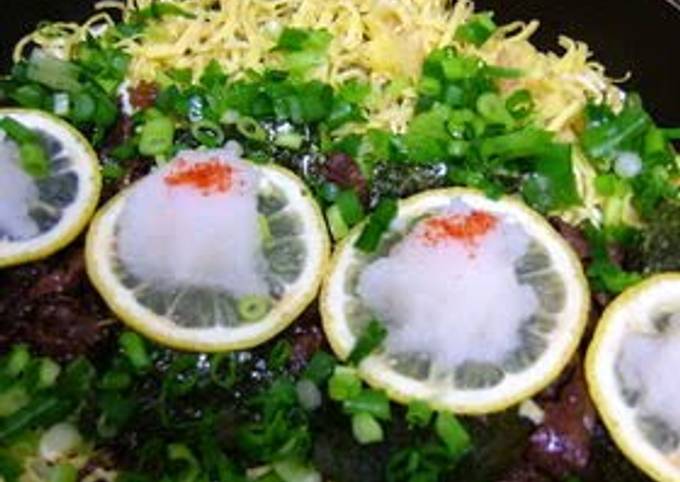Kawara Soba - Roof Tile Noodles - My Perfect Recipe!. Spread the noodles in the skillet, top it with the shredded egg, beef topping, nori seaweed, lemon, grated daikon, and the scallion in that order. Sprinkle some ichimi red chili pepper if desired. Instructions to make Kawara Soba - Roof Tile Noodles - My Perfect Recipe!
 They are nice and they look wonderful.
To get started with this particular recipe, we must prepare a few ingredients.
To begin with this recipe, we must prepare a few ingredients.
You can cook Kawara Soba - Roof Tile Noodles - My Perfect Recipe! using 16 ingredients and 17 steps. Here is how you cook that.
They are nice and they look wonderful.
To get started with this particular recipe, we must prepare a few ingredients.
To begin with this recipe, we must prepare a few ingredients.
You can cook Kawara Soba - Roof Tile Noodles - My Perfect Recipe! using 16 ingredients and 17 steps. Here is how you cook that.
Ingredients of Kawara Soba - Roof Tile Noodles - My Perfect Recipe!
- You need of servings Dried cha soba (noodles flavored with green tea).
- You need of Sweet and salty beef topping:.
- It's of Thinly sliced beef (chuck or flank).
- It's of to 2 tablespoons Soy sauce.
- Prepare of Sugar.
- You need of Mirin.
- You need of Shredded Usuyaki Tamago.
- You need of Eggs.
- It's of Sugar.
- You need of Salt.
- It's of Other Toppings.
- It's of pieces Nori seaweed (for rice balls).
- Prepare of pieces Sliced lemon.
- You need of Daikon radish.
- Prepare of Green onion or scallion.
- You need of x 4 Sauce for kawara soba (or mentsuyu).
Second only to Hamakatsu restaurant's chicken katsu! Kawara Soba is literally translated roof tile soba! One of my FAVORITE things about Japanese houses are the roof tiles! I love the effect of these concave clay tiles laying in perfect rows across a roof top.
Kawara Soba - Roof Tile Noodles - My Perfect Recipe! instructions
- Cook the cha-soba noodles. Boil a pot full of water and cook the noodles for a little shorter than the suggested time. If the directions say to boil it for 5 minutes, about 3 minutes should be fine..
- Drain in a colander, and rinse with cold running water. If you can, tighten up the noodles with ice water and drain well so they don't soften too quickly..
- Make the usuyaki tamago (thin and flat omelette) and cool it down..
- Heat the oil in a skillet, sauté the beef and add the seasoning and 40 ml of water. Simmer until shiny (about 15 minutes)..
- You can preseason the beef to your preference as well..
- Shred the egg..
- Thinly slice the lemon. Grate the daikon radish and drain the excess liquid, and chop the green onion finely..
- Warm up the sauce. If you are using regular mentsuyu, add about 30 ml of mirin and simmer it for a while (so the sauce will be a little sweeter.).
- Heat an electric griddle or a skillet, coat it with 1 tablespoon of vegetable oil (not listed), and sauté the cha-soba noodles lightly..
- Spread the noodles in the skillet, top it with the shredded egg, beef topping, nori seaweed, lemon, grated daikon, and the scallion in that order. Sprinkle some ichimi red chili pepper if desired..
- Wait until the noodles start to scorch a little, about 4 minutes over low heat. It's better to have a crunchy part and a soft part..
- Put a lemon slice and grated daikon into the individual bowl with the sauce already in it. Wrap the noodles with a piece of nori seaweed and it is perfect!.
- The secret to its deliciousness is the harmony of the condiments. Prepare all the toppings if possible..
- Grocery stores near our house have been carrying a "Kawara soba set" as of late. It comes with dipping sauce as well, so it's very convenient! The precooked noodles are pretty good, too..
- "vegecat-san" made a canned tuna version recipe. Give it a try!.
- It's so tasty, I wouldn't be surprised if it became the official dish of an eating competition. "Nanakobu-san"'s recommendation is to serve it individually beforehand..
- This is my friend K's idea. She used an actual leftover roof tile! It has some uneven parts, but it is esthetically nice!.
My favorite ones are the bright blue ones but they come in other tones as well. A bit on the Cooking Utensil, the Noodles, & the Dipping Sauce- • The term 'kawara' means 'roof tile'. The hot kawara was used to cook the soba noodles & the toppings. It gave the noodles a fabulous crunchy texture and kept them hot until one finished eating! For convenience, you may use a frying pan or electric griddle.• Cha-soba cooked on a real kawara tile.